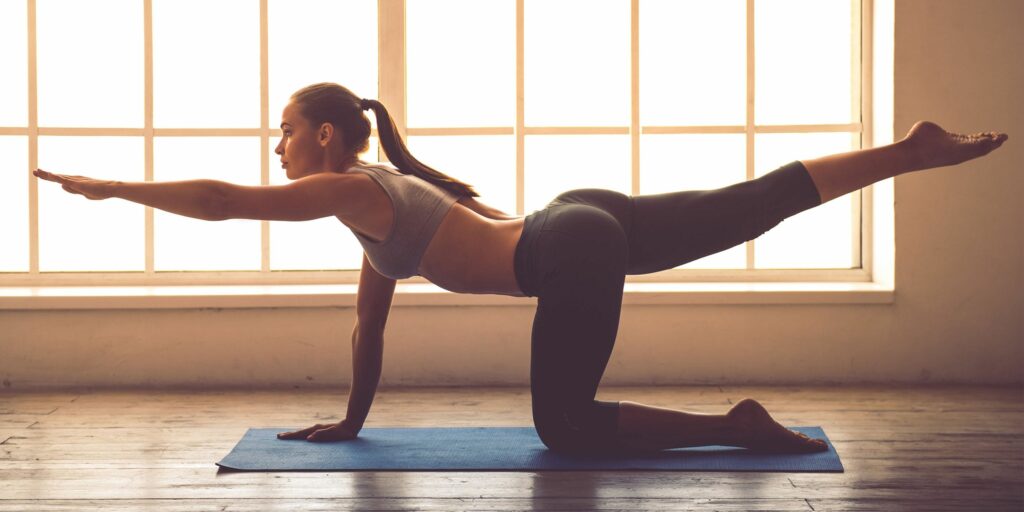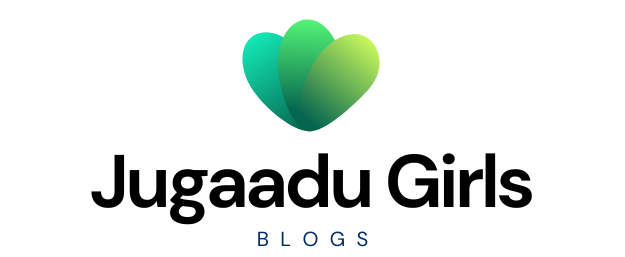The ancient practice of yoga, steeped in rich history and tradition, has blossomed into various forms, each offering unique benefits and experiences. These 11 different types of yoga cater to a diverse range of needs, making yoga accessible and beneficial to everyone. Whether you’re seeking a physically intensive workout, a serene mental escape, or a spiritual connection, there’s a yoga style that suits your preference.
From the strength-building Ashtanga, the fluid transitions of Vinyasa, to the meditative calmness of Yin, these yoga types offer something for everyone. By understanding the fundamentals of each yoga style, you can choose the one that aligns with your fitness goals, mental wellbeing, and spiritual journey. The beauty of yoga lies in its versatility – it adapts to fit you, not the other way around. Here, we will explore types of yoga, and discover the practice that resonates with your heart, body, and mind.

What is Yoga?
Yoga is a practice deeply rooted in ancient Indian traditions, designed to promote balance and harmony between mind, body, and spirit. It’s not just about bending, twisting, and stretching the body, but about fostering a deep sense of inner peace and wellbeing. Yoga integrates physical postures (asanas), breath control (pranayama), and meditation to cultivate self-awareness and mindfulness.
Regular practice of yoga can enhance flexibility, strength, and endurance, alleviate stress and anxiety, and promote overall health. The beauty of yoga lies in its adaptability, welcoming individuals of all ages, fitness levels, and backgrounds. Whether you’re seeking physical fitness, emotional resilience, or spiritual enlightenment, yoga has the potential to enrich your life. It’s a journey of self-discovery, inviting you to explore your physical capabilities and delve into the depths of your inner self.
Related: Benefits of Yoga for health.

List of Different Types of Yoga
1. Hatha Yoga
Hatha Yoga is often referred to as the yoga of physical postures and is generally where beginners start. It incorporates asanas (postures) and pranayama (breathing exercises) to prepare the body for deeper spiritual practices like meditation. Hatha yoga is about balance – ‘Ha’ signifies the sun and ‘tha’ represents the moon. This style aims to balance the opposing forces in the body.
A Hatha yoga class generally involves a slow-paced stretching session with some simple breathing exercises and meditation. To practice Hatha Yoga, begin with a gentle warm-up, followed by a series of asanas that you hold for a certain period. The session usually concludes with a period of relaxation and meditation. This type of yoga is excellent for beginners due to its slower pace and focus on the basics.
2. Vinyasa Yoga
Vinyasa Yoga, also known as “Flow Yoga,” This type of yoga style is a dynamic and physically engaging style that synchronizes breath with movement. The term “Vinyasa” is derived from the Sanskrit word “nyasa,” which means “to place,” and “vi,” which means “in a special way.” Hence, Vinyasa is all about arranging poses in a unique, flowing sequence.
In a Vinyasa class, poses smoothly transition from one to another guided by inhales and exhales, much like a choreographed dance. Each session can vary, offering a unique experience each time. To practice Vinyasa Yoga, you start by establishing a steady breathing rhythm, then move through a series of poses like the Sun Salutation, and finally end with relaxation and meditation. Its rhythmic nature makes it a popular choice for those seeking a more cardiovascular workout. Beginners should start with a slow-paced class to master the basics before moving onto faster flows.
3. Iyengar Yoga
Iyengar Yoga is a meticulous form of yoga that emphasizes precision, alignment, and mindful breath control. Founded by B.K.S. Iyengar, this style is marked by its use of props like yoga blocks, belts, and bolsters to assist in performing poses correctly, minimizing strain, and avoiding injuries. Ideal for beginners and those with physical limitations, Iyengar Yoga allows practitioners to understand the fundamental aspects of each pose in depth.
A typical Iyengar Yoga session could involve a sequence of standing and seated poses, twists, backbends, inversions, and quiet restorative poses. Each pose is held for a longer duration, facilitating deep stretches and enhancing body awareness. Regular practice of this type of yoga can enhance flexibility, strength, balance, and overall health.
4. Ashtanga Yoga
Ashtanga Yoga, rooted in ancient yoga teachings, is a rigorous and disciplined style popularized by K. Pattabhi Jois. It follows a set sequence of postures (asanas) linked by breath control (vinyasa). Each session typically begins with Sun Salutations (Surya Namaskara A and B), followed by standing poses, seated poses, inversions, and backbends, concluding with relaxation in Corpse Pose (Savasana). The practice’s sequential nature means practitioners gradually learn the series, mastering each pose before proceeding to the next.
Ashtanga Yoga demands focus, strength, and stamina. With regular practice, it can enhance physical fitness, mental focus, and internal purification through sweat. Suitable for those seeking a dynamic and structured practice, Ashtanga Yoga should ideally be learnt under the guidance of a qualified teacher to ensure correct technique and avoid injuries.
5. Bikram Yoga
Bikram Yoga, named after its founder Bikram Choudhury, is an energetic form of yoga performed in a heated room, approximately 40°C (105°F), with 40% humidity. This ‘hot yoga’ encompasses a sequence of 26 postures (asanas) and two breathing exercises, performed over 90 minutes. Each pose is designed to be performed twice and held for a certain period. The heat facilitates deeper stretching, promotes detoxification through sweating, and aims to prevent injuries. Common benefits reported include improved flexibility, enhanced muscle strength, better balance, and mental endurance.
Practicing Bikram Yoga should ideally be under professional guidance. Ensure proper hydration before and after each session due to the intense heat. Pregnant women, individuals with heart conditions, or those who are extremely dehydrated should consult their doctor before trying Bikram Yoga.
6. Kundalini Yoga
Kundalini Yoga, often called the “Yoga of Awareness,” seeks to awaken the dormant spiritual energy at the base of the spine, represented as a coiled serpent. This dynamic form of yoga, developed by Yogi Bhajan, integrates movement, breath control, meditation, chanting, and the use of mantras.
A Kundalini session starts with a warm-up, followed by a specific sequence known as a kriya, which combines postures (asanas) with breath work. Then, a meditation period follows, ending with a closing song or prayer. This yoga form enhances spiritual awakening, self-awareness, and physical well-being. Since Kundalini Yoga can be intense, beginners are advised to start gently under a certified instructor’s supervision. Remember, the goal is not to perfect the posture but to unite the physical, mental, and spiritual aspects of your being.
7. Yin Yoga
Yin Yoga is a slow-paced, contemplative yoga style that focuses on deep, passive stretching of the connective tissues, including tendons, ligaments, and fascia. Originated by Paul Grilley and further developed by Sarah Powers, it encourages long holds, usually between three to five minutes per pose, fostering patience and inner tranquility. Yin Yoga’s approach is meditative, often targeting the hips, lower back, and inner thighs.
Practicing Yin Yoga involves settling into a posture, finding your edge, and becoming still, while maintaining a gentle, deep breath. Props such as bolsters, blocks, and blankets are frequently used for added support and comfort. This style of yoga is ideal for winding down and promoting flexibility. As Yin Yoga encourages introspection, it’s an excellent complement to more vigorous forms of exercise and a fast-paced lifestyle. Always listen to your body, not forcing a pose, and ensuring your practice is free from discomfort.
8. Restorative Yoga
Restorative Yoga, a practice developed by B.K.S. Iyengar, is designed to allow deep relaxation and healing. It employs various props such as bolsters, blankets, blocks, and straps to fully support the body in each pose. The aim is to hold each posture for an extended period, usually around 5-20 minutes, encouraging a profound state of relaxation and allowing the body to release deeply held tension. This style emphasizes stillness and silence, promoting a meditative state that can provide deep mental calm.
Restorative Yoga is suitable for all levels, especially beneficial for individuals experiencing stress or recovering from illness or injury. It’s a practice of ‘being’ rather than ‘doing’, so focus on comfort and ease throughout. Consult a certified instructor or reputable online resource to learn correct prop usage and pose modifications, ensuring a safe and beneficial practice.
9. Prenatal Yoga
Prenatal Yoga is a specialized form of yoga designed to support expectant mothers throughout their pregnancy journey. It focuses on gentle stretching, mindfulness, deep breathing, and strengthening of muscles that support childbirth. Common practices include gentle flowing sequences, pelvic floor exercises, and relaxation techniques, which help pregnant women adapt to physical changes and manage discomforts associated with pregnancy. Poses are modified to accommodate growing bellies and shifts in the center of gravity. For example, a wide-legged stance is often used for balance poses. Women should always consult with their healthcare provider before beginning or modifying a yoga regimen.
Additionally, it’s important to work with a certified prenatal yoga instructor or follow a reliable online course to ensure safety. Prenatal Yoga is not about exertion but nurturing oneself and the growing life within. Always prioritize comfort and well-being over achieving a ‘perfect’ pose.
10. Anusara Yoga
Anusara Yoga, founded in 1997, embraces a philosophy that seeks the goodness in all things. It focuses on alignment, both physically and mentally, and aims to open the heart, fostering an uplifting and joyful practice. In Anusara, there are five ‘Universal Principles of Alignment’ guiding all postures, aiming to align the body in a way that supports health and well-being. Sessions typically start with a heart-centered theme, then progress to flowing postures, emphasizing the mind-body-heart connection.
Practicing Anusara involves both physical movements and an understanding of its spiritual philosophy. It’s suitable for students of varying levels, with modifications made for different abilities. Always practice under a certified Anusara Yoga teacher for a safe and enriching experience.
11. Jivamukti Yoga
Jivamukti Yoga, founded in 1984, combines physical postures (asanas), ethical standards, music, and spiritual teachings into a comprehensive practice. It’s a vigorous style, ideal for those looking to merge spiritual aspects with an intense physical workout. Typical Jivamukti classes include vinyasa-style asana sequences, meditation, Sanskrit chanting, and teachings drawn from yoga philosophy. Each class focuses on a monthly theme, connecting yoga to daily life.
To practice Jivamukti Yoga, find a certified teacher or studio. Due to its intensity, some prior yoga experience is helpful. However, beginners are welcome, with modifications provided to accommodate different abilities. Remember to maintain a balance between body and mind throughout your practice.

Conclusion
Yoga is an expansive discipline with various styles catering to diverse needs. Whether you’re seeking physical strength, flexibility, relaxation, or spiritual connection, there’s a type of yoga to suit you. Hatha and Iyengar Yoga focus on pose precision, while Vinyasa and Ashtanga offer dynamic flows. Bikram and Kundalini yoga each offer unique experiences, while Yin, Restorative, and Prenatal Yoga prioritize relaxation and mindfulness. Anusara and Jivamukti blend physicality with spiritual teachings. Experiment with these styles to find your perfect fit.


